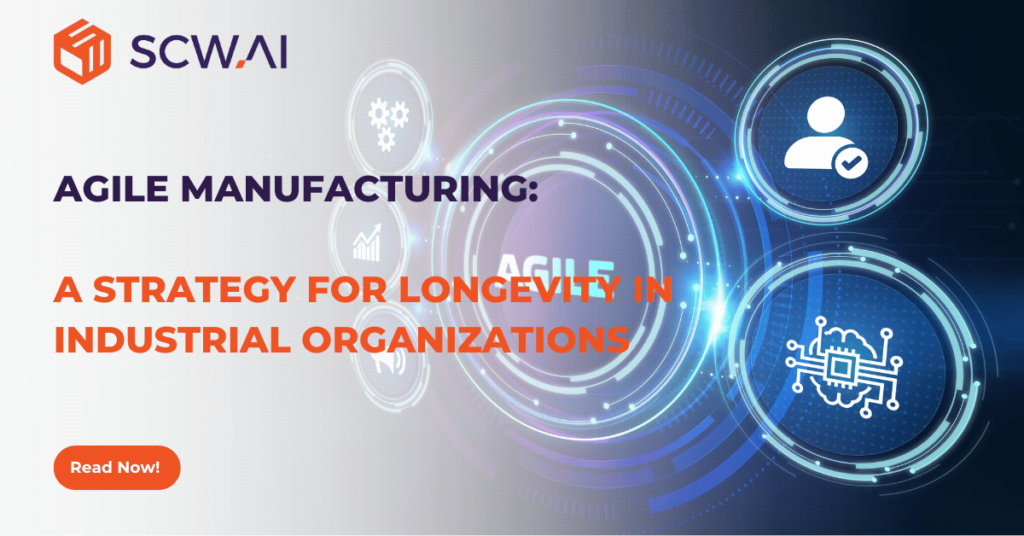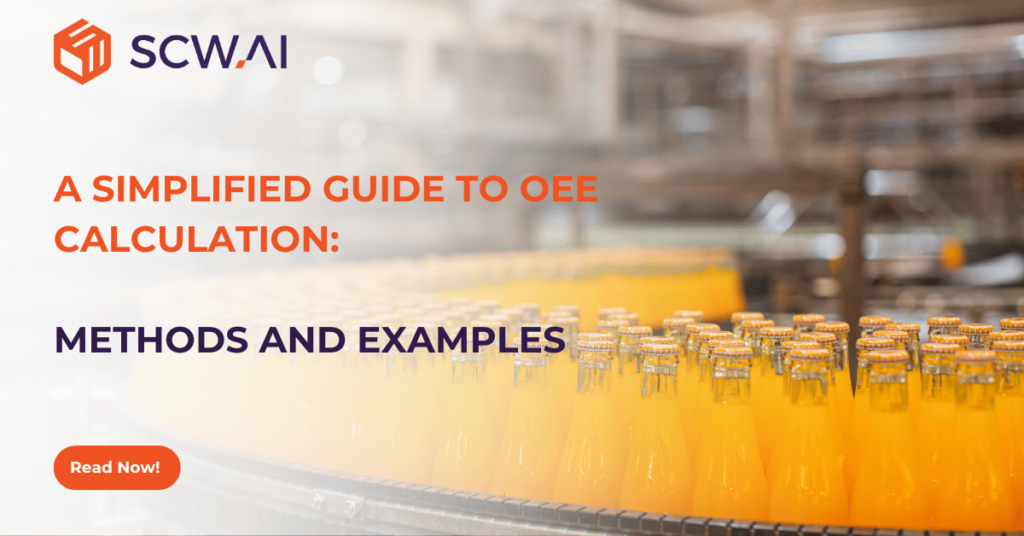According to a McKinsey study, factory automation solutions, when successfully implemented, have a significant positive impact on productivity, sustainability, speed-to-market, and the agility of companies. However, the same study demonstrates that only around 1% of manufacturers harness end-to-end digitalization and are able to become lighthouses, where production, data collection, and decision-making processes are fully automated or significantly augmented through automation technologies.
Our experience spanning over a decade with manufacturing companies shows that while most factory leaders and executives understand the potential benefits of automated factories, they struggle to keep up with rapid technological advancements and determine specific use cases for their shop floor. Moreover, confusion about how and where to start digital factory transformation are other major pain points.
This blog post aims to address all these major pain points. In this article, we will provide in-depth information on factory automation, the technologies that can be utilized along with their specific use cases by providing real life examples. Later, we will provide information on trends regarding factory automation and conclude the article by demonstrating best practices that can assist in making your factory a lighthouse, as well as how a partnership with SCW.AI can support you on the digitalization journey.
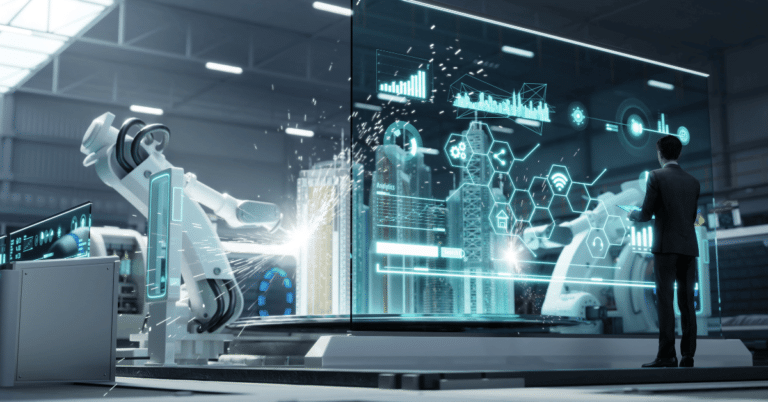
What is Factory Automation
Factory Automation can be defined as the replacement of manual and human interventions with Industry 4.0 solutions. The primary motivation behind automated factories is the ability of digital solutions to operate continuously, around the clock so they improve output. Also, when deployed with consideration for task requirements and continuously tuned through feedback provided by shop floor data, autonomous devices can standardize operations and reduce scrap rates.
While manufacturers often consider pneumatic systems, hydraulic systems, and robotics for automating production, advancements in factory data collection tools, cloud manufacturing solutions, and AI have expanded the scope of automation to all shop floor operations, including management and compliance-related issues.
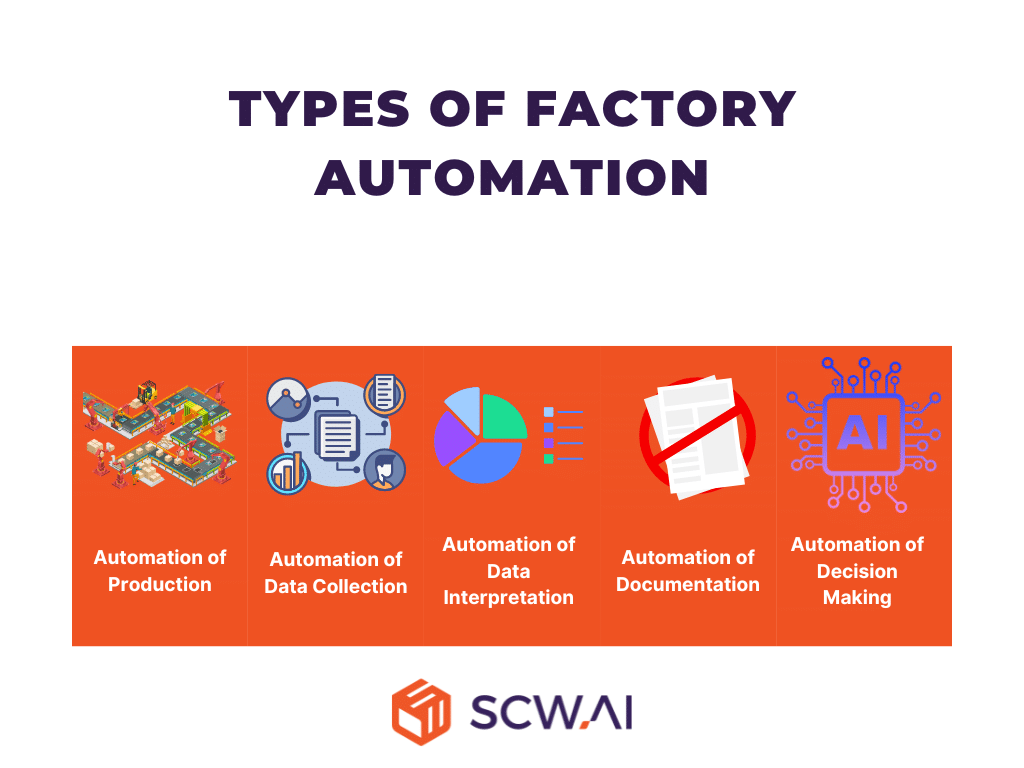
Therefore, in today’s world, it is advisable to consider lighthouse factories, which benefit from end-to-end automation for the following:
- Automation of Production: Technologies like robotics and pneumatic systems integrate production lines to perform different steps with little or no human intervention, thereby finalizing production steps efficiently.
- Automation of Data Collection: With minimal human intervention, data regarding production duration, quality, machine/line performance, worker performance, energy/water consumption, and more can be collected into secure databases.
- Automation of Data Interpretation: Executives or managers can effortlessly monitor and interpret shop floor data collected on production, machines, workers, etc., for specific time frames. Automated reports and dashboards enable them to identify production bottlenecks, find root causes, and take necessary actions.
- Automation of Documentation: Compliance requirements mandate documentation of production processes for many manufacturing industries. Additionally, sustainability reporting is becoming a necessity for manufacturers. Documentation automation technologies simplify this process for workers by automatically extracting and interpreting data from different departments.
- Automation of Decision Making: Today, AI/ML or also referred as intelligent automation can augment decision-making for manufacturers. With minimal effort from executive and management levels, factories can make decisions regarding maintenance, production and labor schedules, and determine input variables of machines for achieving optimal results.
In the following sections you can find which technologies specifically automate which tasks.
Top 5 Benefits of Factory Automation
Benefits of factory automation can be summarized as follows:
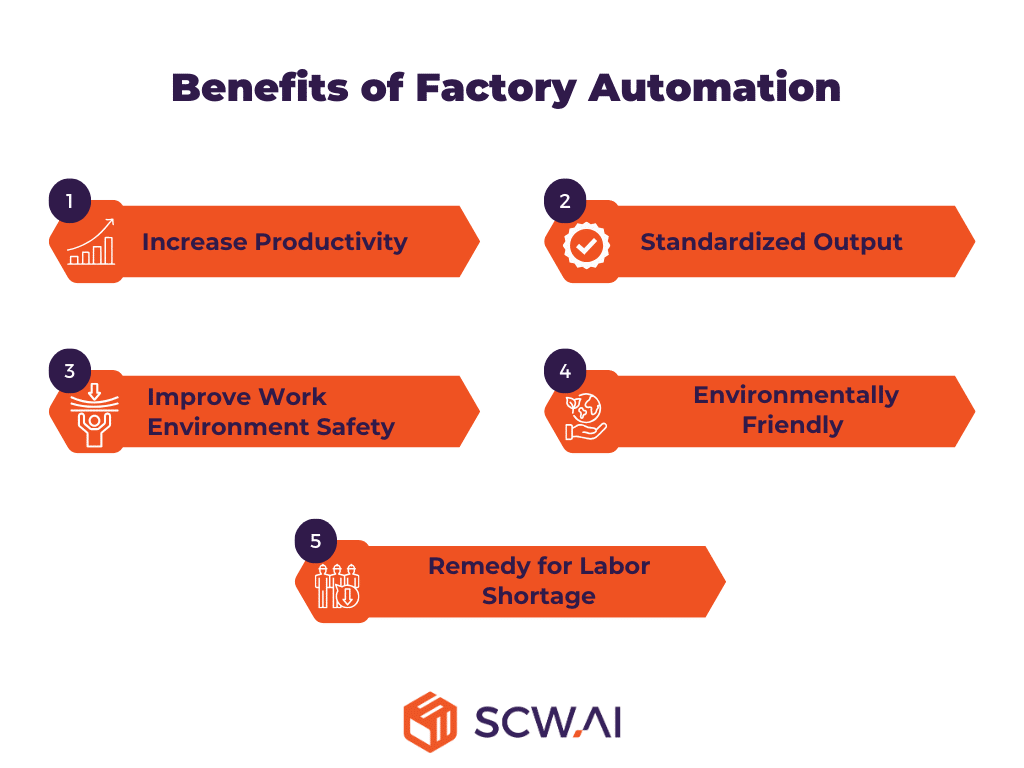
1. Increase Productivity
According to the World Economic Forum, as of 2023, there were 132 lighthouse factories in the world. These factories experienced a total output increase ranging between 4% and 140%, with the majority of them showing improvements between 20% and 40%. The main drivers for this output increase can be attributed to:
- The ability of machines to operate 24/7.
- Greater visibility and AI implementation, which enhances OEE.
- Line balancing, enabling sustainable high productivity.
2. Standardized Output
Automated processes are repeatable. By combining reputation and improved visibility, manufacturers can replicate and sustain successful production processes while identifying and rectifying inadequate ones. Consequently, they can enhance overall quality. For example, Dr. Reddy’s Laboratories, an India-based pharmaceutical manufacturer, reduced its quality deviations by more than 50% through the implementation of factory automation solutions.
3. Improve Work Environment Safety
Fundamentally, automation means using less human intervention to produce the same quantity of output. As a result, it keeps employees distant from risky or hazardous environments. Thus, automated factories can assist firms in enhancing KPIs connected to worker safety, like TRIR, LITFR, the quantity of safety violations, etc.
4. Environmentally Friendly
Automated factories operate more efficiently, resulting in reduced waste per unit of production. For example, Turkish durable goods producer Arçelik decreased its Scope 1 greenhouse gas emissions by 35% and water consumption by 20% through its Industry 4.0 transformation
5. Remedy for Labor Shortage
The global manufacturing sector struggles with a serious labor shortage. Automating labor-intensive and repetitive processes and assigning them to digital solutions is one of the best strategies to counteract the negative effects of a manpower shortage. For example, Kordsa, one of our customers, was able to reduce worker hours for low-value tasks by 30% as a result of digital factory transformation.
Production Automation Technologies
Production automation technologies can be divided into three groups, as seen in the illustration below.
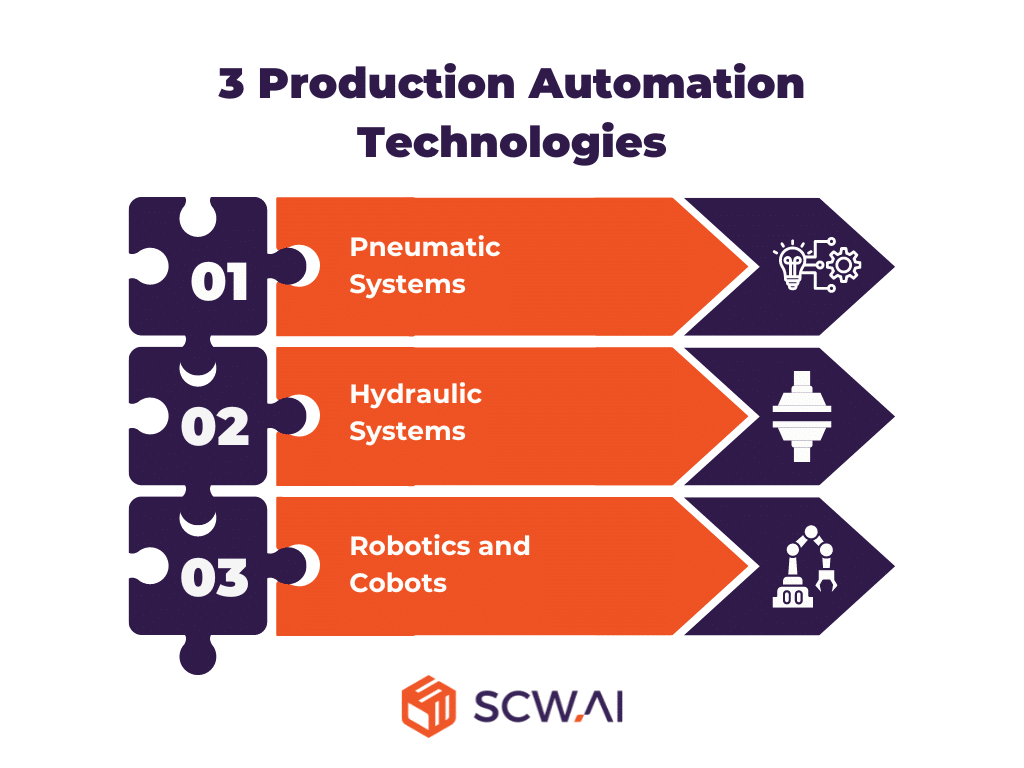
Pneumatic Systems
Pneumatic Systems utilize compressed air to transmit and control power, serving as a fundamental technology in various industrial applications. These systems rely on pneumatic actuators, valves, and cylinders to perform tasks such as gripping, lifting, and moving objects along assembly lines. Pneumatic systems are widely employed in manufacturing environments where precise control and rapid response times are essential.
Hydraulic Systems
These systems use hydraulic fluid to transmit force through hydraulic cylinders, motors, and pumps, enabling heavy lifting, precise positioning, and controlled motion in machinery and equipment. With their high power density, durability, and ability to operate in harsh environments, hydraulic systems are integral to numerous applications, including construction, aerospace, and automotive manufacturing.
Robotics and Cobots
Employing advanced sensors, vision systems, and AI algorithms, robotics and cobots (collaborative robots) demonstrate proficiency in a variety of tasks, including assembly, welding, inspection, and packaging, thereby enhancing efficiency and fostering innovation across industries. For instance, Mondelēz’s factory in India, an international food and beverage manufacturer, augmented its productivity by nearly 30% through the integration of robotics and cobots.
Factory Automation Solutions for Data Collection
The backbone for swift root cause analysis and deploying bias-free AI models in decision-making lies in automated data collection, facilitating immediate issue identification.
Characterized by high quality, data possesses the following attributes:
- Accuracy: Guaranteeing precision and correctness.
- Real-time Collection: Promptly gathering information as events unfold.
- Granularity: Providing detailed and specific data to monitor production line by line, work order by work order, and activity by activity.
- Continuity: Ensuring a continuous flow of data.
- Lack of Overlaps: Preventing duplications or redundancies in the data.
For industrial organizations, there are three main solutions for collecting automated, high-quality data from the shop floor: Industrial IoT tools, PLC connections, and OPC connections.
IoT
Industrial IoT devices are smart sensors capable of collecting factory data pertaining to machines, the environment, and workers. Consequently, IoT tools facilitate real-time production tracking. For example, Huayi, a manufacturer of fine chemicals, utilized IoT tools for equipment monitoring and failure diagnosis, resulting in a 10% increase in overall equipment effectiveness (OEE).
To learn more about industrial IoT and the types of data they can collect from the shop floor, please visit our dedicated article on the subject.
PLC Connections
Modbus Programmable Logic Controllers (PLCs) are one of the common methods for collecting machine and production data in real-time in an automated manner. Since PLC data is collected in hexadecimal language, which is not readable for many people, an IoT device is needed to make the data human-readable (See Figure Below).
There are three types of Modbus PLC connections:
- Serial Modbus (RTU)
- Ethernet Modbus (TCP/IP)
- Modbus ASCII
To learn about the features, benefits, and drawbacks of each type, you can read our article titled Modbus PLC: An Automated Way of Collecting Factory Data.

OPC Connections
Open Platform Communications (OPC) provides a suitable method for gathering human-readable and real-time data from machines in a fully automated manner. By utilizing APIs, this data can seamlessly transfer to cloud manufacturing solutions, ERP systems, or AI platforms, enabling manufacturers to take data-driven actions.
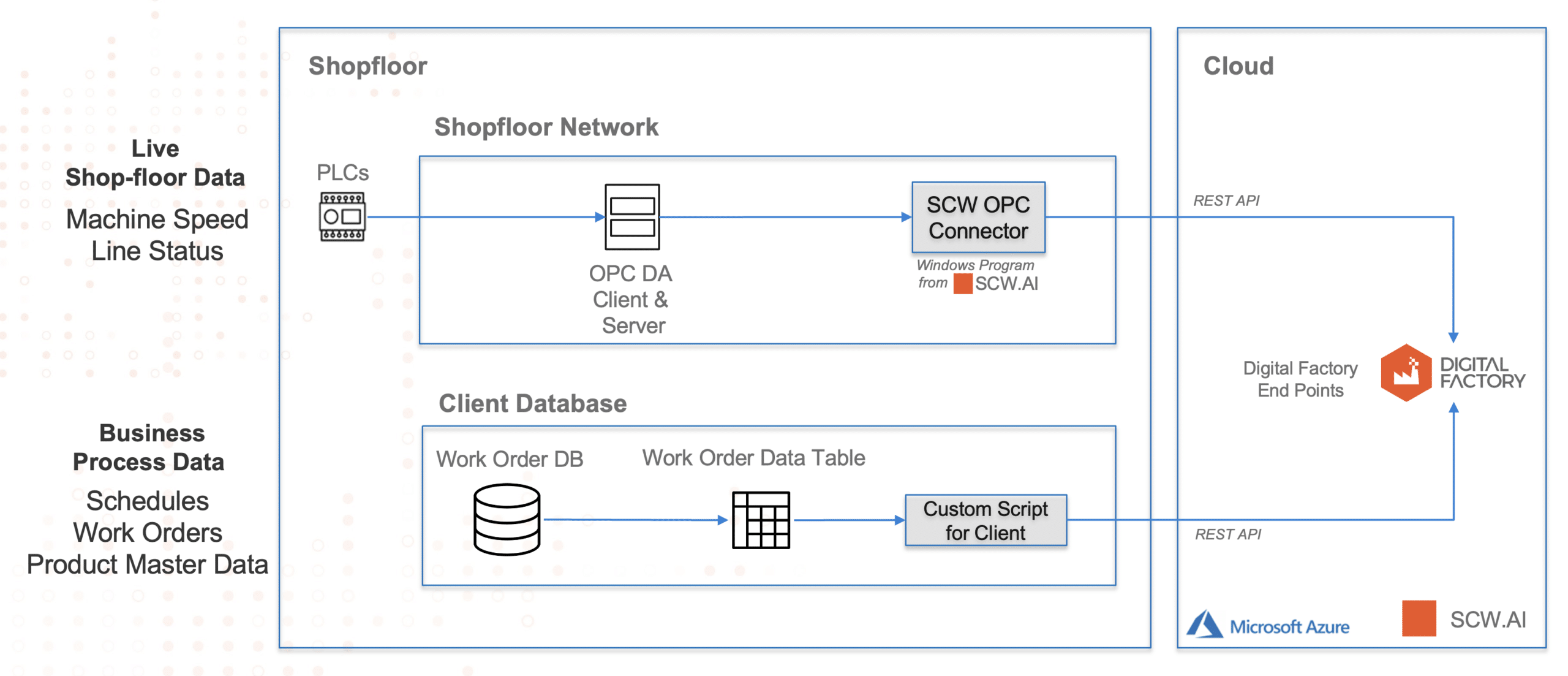
Factory Automation Solutions for Data Interpretation and Representation
Without effective data interpretation, deriving meaningful results from data collection is impossible. Automated factory solutions that represent factory data in real-time dashboards on desktops, tablets, and mobile devices allow executives to identify production bottlenecks, determine their root causes, and take data-driven actions to address them. Moreover, by monitoring the data on these platforms, they can determine whether their actions assist factories in achieving desirable outcomes.
There are three main factory automation solutions that provide streamlined data interpretation:
Automated Dashboards and Reports
Automated dashboards and reports offer real-time insights into manufacturing KPIs, enabling managers and executives to gauge the operational efficiency of their factory over a specified time period. These dashboards typically include generic metrics such as:
However, if manufacturers have unique metrics they wish to monitor consistently, they should also have custom reports tailored to these metrics, facilitating change management.
For example, Danone, a food and beverage manufacturer, increased its OEE by 12 points thanks to automated dashboards. The image below illustrates SCW.AI’s OEE Waterfall Analysis, which enables manufacturers to identify the sources of losses and take data-driven actions accordingly.
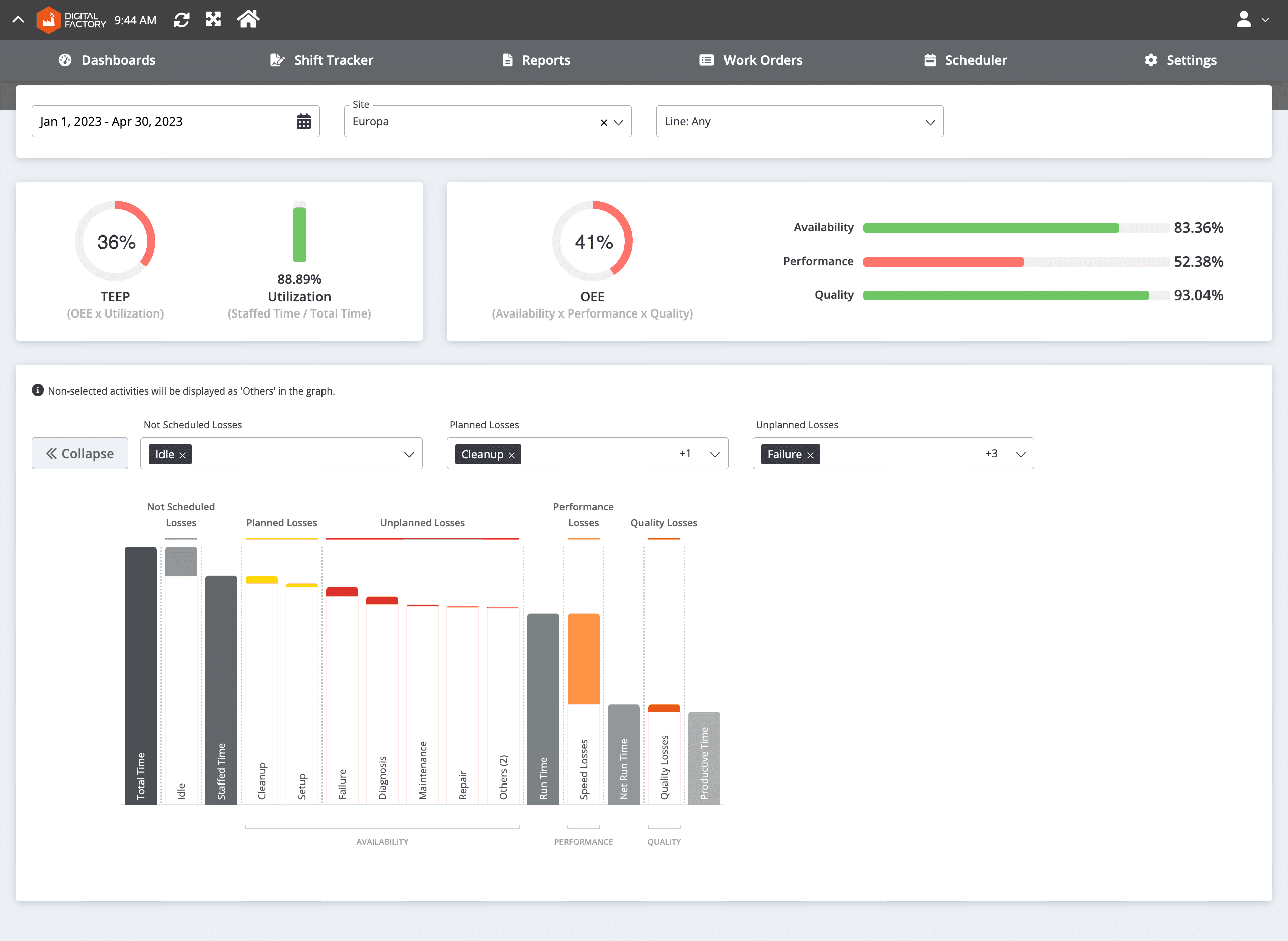
Manufacturing Apps
According to a Gallup survey, 90% of workers prefer a hybrid work model over constantly working on-site. For nearly a third of workers, the absence of a hybrid work option is a reason for rejecting a job offer. SCW.AI believes that the lack of flexibility offered by manufacturers regarding hybrid work is one of the reasons for the industry’s labor shortage problem.
On the other hand, tools like manufacturing apps can be ideal solutions for enabling engineers to work from locations other than factories. These tools provide 24/7 visibility for engineers to check the status of production lines, monitor production speed of machines, receive alerts regarding shop floor activities, and offer many other functionalities.
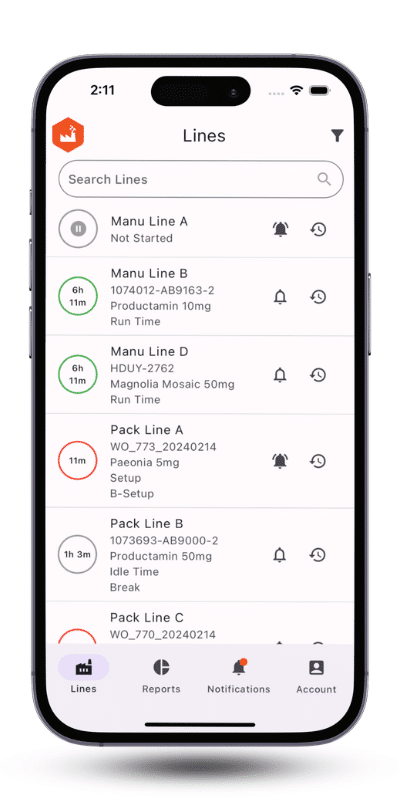

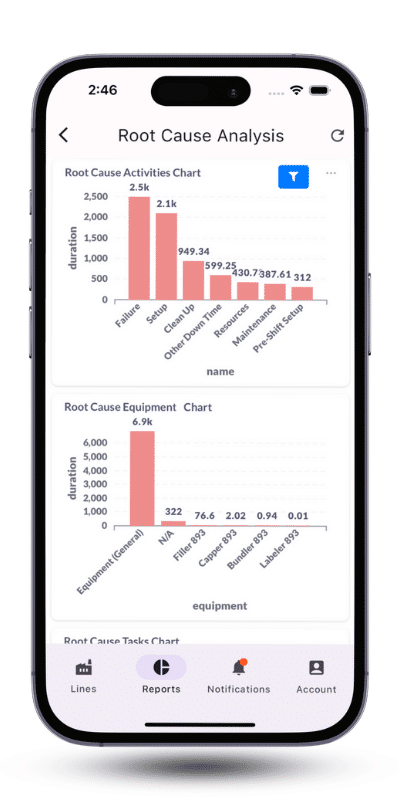
Alerts and Notifications
In the Industry 4.0 era, issue detection can occur instantaneously thanks to real-time alerts. For example, if a machine experiences an unexpected stoppage, IoT devices integrated into the machinery can promptly identify the disruption and trigger an alert. This alert can be seamlessly conveyed to relevant personnel through a mobile application on their smartphones, notifications on smartwatches, or displayed on strategically placed TV screens within the manufacturing facility.
Factory Automation Solutions for Compliance
Regulatory authorities require many industries to document their production processes and present them to auditors during examinations to avoid financial and disrepute penalties. For example, as part of current Good Manufacturing Practices (GMP), companies operating in the pharmaceutical, food and beverage, and cosmetic industries must maintain production logbooks that ensure ALCOA+ data security principles.
Paperless quality solutions address these requirements inherently. For instance, SCW.AI’s Digital Logbook is a GMP-compliant solution that ensures compliance with the ALCOA+ data integrity rules. By using such a tool, a pharmaceutical manufacturer, for example, could potentially reduce its chance of receiving a warning letter from the FDA by 6% due to non-compliance with log reporting principles. According to our experience, such tools also reduce the time needed for workers to fill out logs between 50% to 85% thanks to automation.
Our Digital Logbook has the following features:
- User authentication
- E-signatures
- Access management
- Built in document management system
- Full audit trail
- Out of specification notifications
- Automated calculations/data capturing and many more.

To learn more about Digital Logbook solutions to automate your GMP compliant documentation you can read our SCW.AI’s Digital Logbook: Main Features & Use Cases article.
Intelligent Automation Systems for Manufacturers
Intelligent automation in manufacturing harnesses AI technologies to automate decision-making processes for tasks like predictive maintenance, job shop scheduling, and quality control. It represents the cutting edge of factory automation. Despite the substantial business benefits it offers, intelligent automation has only been adopted by a small portion of factories. This lag in adoption could be attributed to its relative novelty in the industry.
Machine Learning Driven Predictive Maintenance
Predictive maintenance with machine learning is a cutting edge total productive maintenance strategy that reduces cost of maintenance and downtime of machines significantly. For instance, pharmaceutical producer Johnson and Johnson reduced its unplanned downtime by 50% thanks to predictive maintenance.
To predict machine downtime, machine learning models utilize advanced algorithms that assess historical production data regarding machines and their working speed and conditions. Once the time of the machine failure is predicted, the maintenance team is scheduled in advance to take care of equipment before downtime occurs.
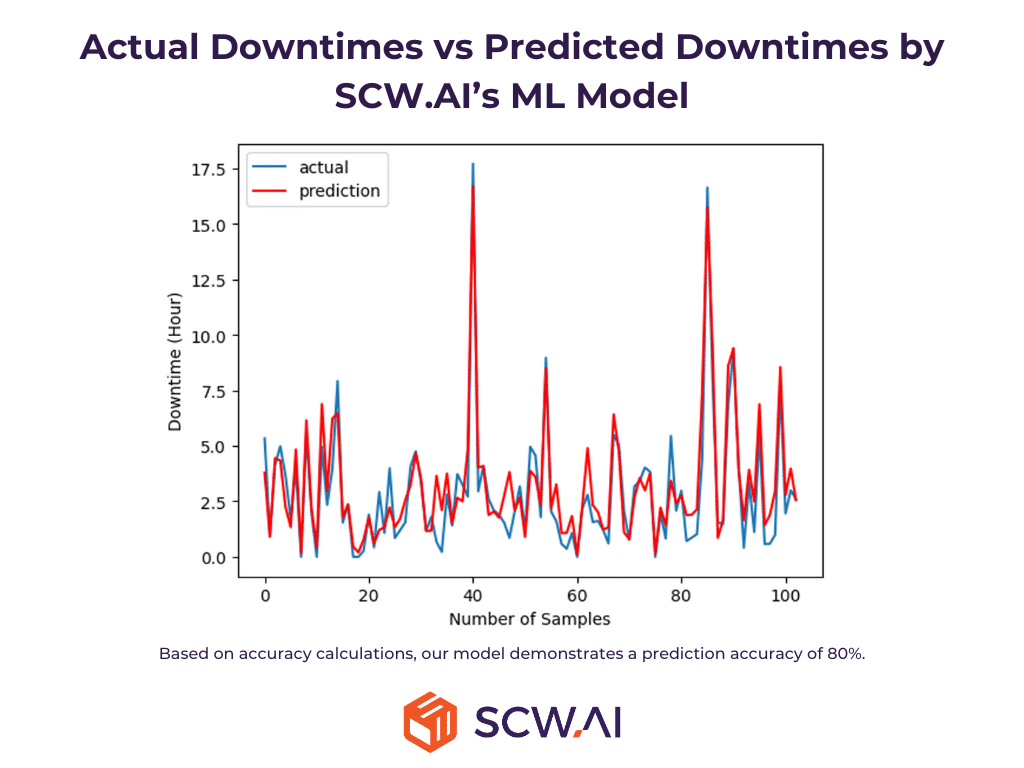
Advanced Planning and Scheduling Systems
Thanks to heuristics and algorithms, advanced planning and scheduling (APS) systems can identify optimal schedules for various business scenarios, including:
- Minimizing changeovers
- Just in time production
- Minimizing energy consumption
- Maximizing On-Time In Full (OTIF) performance.

For example, Haier’s Tianjin factory, which produces durable home appliances, reduced its energy consumption by 13% through the use of APS systems. It is important to note that AI-powered APS systems can also optimize operator performance by strategically assigning them to different production lines.
Computer Vision Driven Quality Check
By analyzing high-quality product visuals, computer vision models can effectively distinguish defective items from acceptable ones, assisting manufacturers in consistently delivering high-quality products. For instance, Haier’s Qingdao factory achieved a 50% improvement in quality check efficiency through the use of AI.

Digital Twins of Factory
Digital twins of factories offer a powerful solution for running realistic simulations to achieve various goals via automated decisions, such as:
- Identifying optimal parameters for high-performing production runs (“golden batches”)
- Enhancing scheduling efficiency
- Optimizing machine uptime through virtual inspections
- Facilitating new product design
- Providing immersive training for workers
For example, Dr. Reddy’s Laboratories, an Indian pharmaceutical manufacturer, reduced overall manufacturing costs by roughly 20% through optimized scheduling and raw material utilization enabled by digital twins.

Do you know that generative AI technology can be your beginning point for building digital twins on your shop floor? To learn more read our In-Depth Guide to Generative AI in Manufacturing article.
How Can Manufacturers Assess Their Level of Automation?
To assess the level of automation within manufacturing, one of the most effective methods is to conduct a survey containing questions that evaluate the extent of digitization across every aspect of Industry 4.0, including production, data collection, data interpretation, documentation, and decision-making. For each question, respondents can rate their factory on a scale of 1 to 5, where 5 indicates full agreement and 1 indicates strong disagreement.
Sample questions for the survey may include:
- Do we utilize pneumatic/hydraulic systems or robotics in our production processes to minimize manual labor?
- Can we systematically capture real-time production data, line by line, including the number of goods manufactured in the last hour for a specific production line and the count of satisfactory units, all achieved without requiring any effort from workers?
- Without any manual effort, can we prepare reports and charts for a specific time interval that depict detailed information on idle time, changeover, unplanned downtime, speed losses, micro stops, and quality losses for each production line?
- Do we employ paperless manufacturing solutions such as digital logbooks to meticulously document our production activities, thereby demonstrating adherence to regulations? Can the data be conveniently presented to auditors through a user-friendly dashboard, with secure archiving guaranteed through storage in diverse databases?
- Do we use AI to augment our scheduling team in order to enhance scheduling for various business requirements, including
- Changeover minimization
- OTIF maximization
- JIT delivery, etc.?
Trends in Factory Automation
Technology Trends
Understanding technology investments made by other manufacturers can be a valuable tool in prioritizing your own digitalization strategy. According to a Deloitte survey conducted in 2023, robotics and data analytics dashboards emerged as the top areas for digital investment among manufacturers. This focus aligns with the industry’s current digitalization gap, suggesting a need to solidify foundational technologies before implementing more complex solutions.
The survey also revealed a significant preference (one-third of executives) for automated data visualization and gathering solutions like cloud computing and IoT. Also, the fact that cloud solutions are cost effective and scalable make them perfect investment opportunities for manufacturers that want to digitize fast.
On the other hand, the adoption of intelligent automation solutions, such as AI and Digital Twins, remains relatively low, with only about 15-25% of manufacturers considering them for investment. This suggests a potential opportunity for forward-thinking companies to gain a competitive advantage by embracing these advanced technologies.
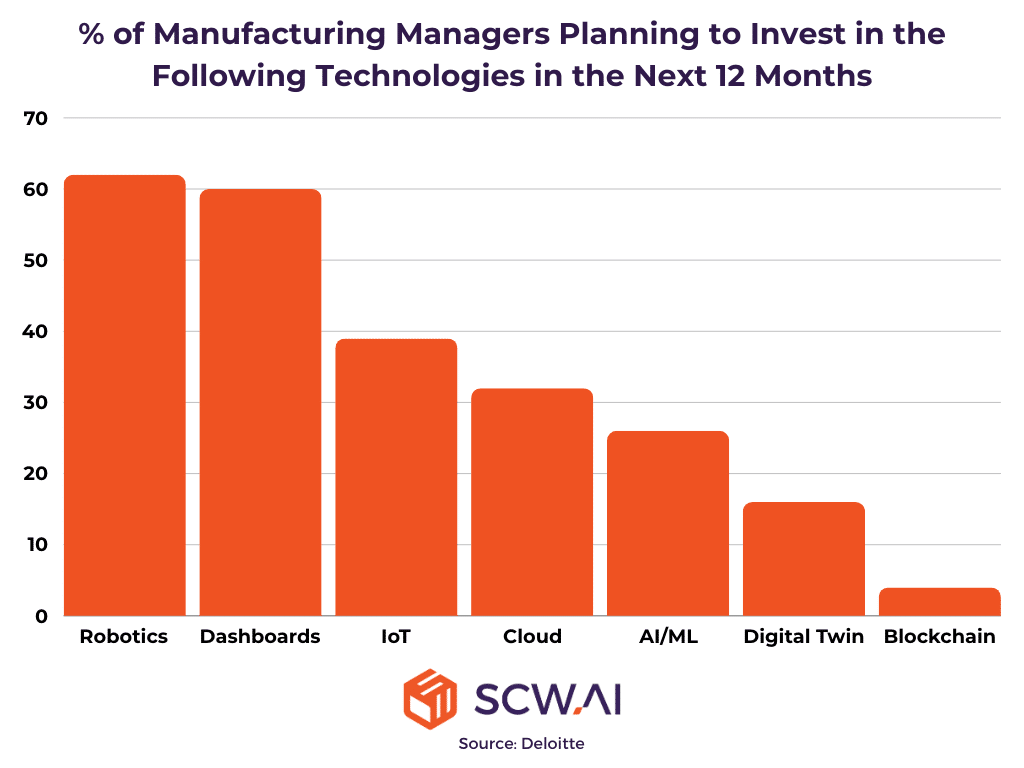
Primary Growth Strategy of Manufacturers
According to Deloitte, last year, a significant portion (around 60%) of manufacturers adopted a strategic partnership approach for factory automation investments. Instead of developing everything internally or through acquisitions, they collaborated with technology vendors. There are several reasons why this method has become the preferred course of action.

Firstly, partnering with tech vendors mitigates the risks associated with digital transformation. Proven solutions offered by these specialists can help manufacturers avoid potential pitfalls. Secondly, this approach is highly adaptable, allowing manufacturers to scale their technological advancements up or down as needed.
Thirdly, outsourcing tech solutions is often more cost-effective than in-house development. Finally, it addresses the current shortage of qualified personnel. Manufacturers can bypass the challenge of recruiting and training a team to build these tools from the ground up by leveraging the expertise of external providers.
4 Factory Automation Best Practices
While the technology behind factory automation is impressive, successful implementation requires a strategic approach. Here are four best practices to consider:
- Have a Clear Business Goal: Automation should be a tool to achieve specific objectives, not a goal itself. Clearly define what you want to improve – is it productivity, quality control, or worker safety? This focused approach ensures your automation efforts are targeted and deliver measurable results.
- Align All Stakeholders for Necessity of Automation: Change management is crucial. Get everyone on board, from executives to production line workers. Explain the benefits of automation, address concerns, and involve stakeholders in the decision-making process. This fosters buy-in and ensures a smooth transition.
- Concern About Scalability, Speed and Simplicity of the Automation Solutions: Modern automation solutions are designed to be scalable. Cloud-based manufacturing platforms offer a perfect example. Cloud solutions are allowing manufacturers to add or remove features as their needs evolve. Additionally, cloud platforms often enable rapid deployment, getting you up and running quickly without extensive IT infrastructure changes.
- Keep an Eye on Manufacturing KPIs to Monitor Progress Towards Goals: Continuously monitor KPIs. This allows you to measure the effectiveness of your automation efforts and make adjustments as needed. Analyzing data also helps identify areas for further automation or improvement.
How Can SCW.AI Assists Manufacturers in Modernizing Factories
SCW.AI designs/serve factory automation solutions for manufacturers on:
- Data collection: We offer industrial IoT devices and expert assistance for OPC and Modbus PLC connections, ensuring effortless data gathering.
- Data Interpretation: SCW.AI designs customizable reports that monitor critical KPIs across production efficiency, speed, scheduling, maintenance, workforce performance, and quality control. We also offer a mobile app version of our Digital Factory Platform and alerts and notifications that you can receive from computers, wearables and smart phones.
- Compliance and Documentation: Our GMP-compliant Digital Logbook streamlines documentation practices for pharmaceutical, food & beverage, and cosmetic manufacturers, increasing both speed and accuracy.
- Intelligent Automation: SCW.AI develops custom AI/ML models to optimize job shop scheduling, and predictive maintenance. We also leverage cutting-edge generative AI technology to create comprehensive digital twins of factory floors.
To learn more about our comprehensive Digital Factory Platform and how we can assist you to build an automated factory, book a demo now.
